Speak, by author Laurie Halse Anderson, was first published in 1999 to wonderful reviews and a whole lot of controversy. Anderson’s first novel helped show us what young adult literature could be. Speak never trivializes or talks down to the audience it was meant for. Instead of shying away from difficult and mature subject matter, it brings it into the light. Perhaps because of this, the book often finds itself banned from libraries and schools. Behind the controversy, however, is a powerful book about finding your voice.
I’ll be keeping this review spoiler free but to give a bit of background, I’ll provide a brief summary. Protagonist Melinda Sordino is a depressed teenager who people want to write off, forget, dismiss–initially this includes even the reader. Melinda’s attitude is one most teenagers will immediately identify with as the book introduces us to her with the kind of sardonic wit seemingly only teenagers know how to dispatch with such expertise. As the reader begins to get to know Melinda, however, the cause for her depression and silence begins unfold.
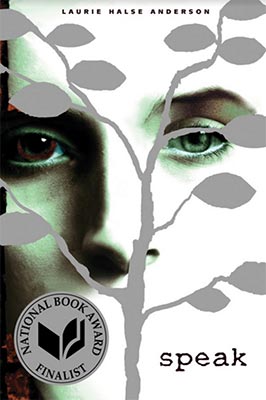
I’ve reread Speak several times over the years partially because it gets the tone of being young so right and partially because it’s just a damn good book. It is a master class in treating the reader with respect and dignity. The book allows the reader the emotional space and freedom to be wrong about what happened or what will happen. For young readers especially, that’s not a gift they are often granted.
Adults often make the mistake of believing young adults are too immature to deal with what they deem to be adult themes. I despise the phrase “adult themes” because it implies that life doesn’t present those under the age of 18 with immense challenges. As if life waits until your prefrontal cortex has fully developed before it asks you to confront the exceptional challenges that come along with living. Anderson’s Speak rejects the idea that we should treat teenagers as people without agency. Instead, she delves into the complex and fraught emotional and social world teenagers inhabit. It’s a book that helped show the literary world all that young adult literature could be.
In 2013, it was announced that Speak would be adapted into a graphic novel by artist Emily Carroll (Through the Woods). The graphic novel was recently released on February 6, 2018, in hardcover and digital by MacMillan. Anderson reworked the story for the graphic novel adaptation, a task she was comfortable with as she got her start in the publishing industry with picture books. In a Publishers Weekly interview (spoilers), she went on to say:
“The fun part with this adaptation is figuring out how few words I can get away with. Some of my favorite moments in the novel are those when Melinda can’t speak because she is so hampered by her depression and the hard things that have happened to her. Now I’ll get the chance to turn that over to Emily, who gets to show readers how those silent moments look and feel. It will be exciting to see her artistic interpretation.”
What does silence look like? How can it be expressed in a way that feels non-trivial? Meaning how can you bring impact to the silence, a weight to it? It’s not just a look or a lack of words, there’s an entire storm of pain Melinda Sordino is holding back. Emily Carroll, whose talent precedes her, has discussed the difficulty of balancing the world Melinda sees and experiences in her head with that of the real world. To help achieve this balance, the color palette is limited and this limitation allows the reader to focus on the mood and tone of what Melinda may be seeing and experiencing in any given moment.
The story of Speak continues to resonate today because of the way the characters are realized. Melinda Sordino is familiar to anyone who has experienced the tumult of youth. There’s an honesty to Melinda’s characterization, she isn’t just depressed. She is also a funny, observant, and talented artist who is learning where she fits into the landscape of high school.
Carroll’s skill comes to fruition in not only her adaption of the mood and emotion of the story but in the depictions of the small moments and expressions that helped make Speak the critically acclaimed novel it is. To see how Carroll depicts that moment when teenagers begin to unravel who their parents are, flaws and all, with a single expression–is a testament to the strength of her immense talent. It never feels contrived or forced, it feels as natural as if you were seeing it for yourself.
In adapting Speak to graphic novel form, Carroll and Anderson update its message for a new swath of readers. It remains as heart-breaking, funny, and poignant as ever. The graphic novel does not only do justice to the original work but brings additional nuance and depth to the story. In Speak: The Graphic Novel we see a continued expansion of what young adult literature is and how have conversations about difficult subject matter. It’s not only a relatable work, it is a beautiful combination of prose and imagery which belies the obvious effort and consideration both Carroll and Anderson put into it.
Despite my familiarity with the novel and 2004 movie adaptation, I found myself able to experience the story in new and profound ways. I can only attribute this to the deft work and care of the authors. This graphic novel stands distinctly on its own, making its mark in the world of young adult literature and bringing its powerful message of resiliciency to a brand new generation.
Below you’ll find the first four pages of Speak: The Graphic Novel now available from MacMillan:
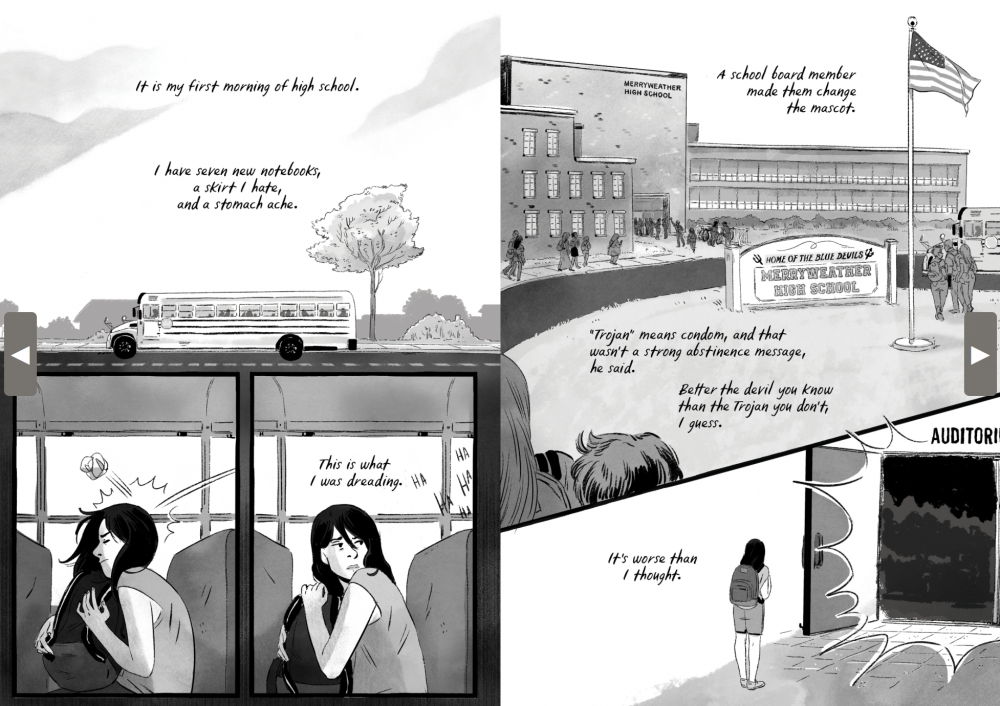
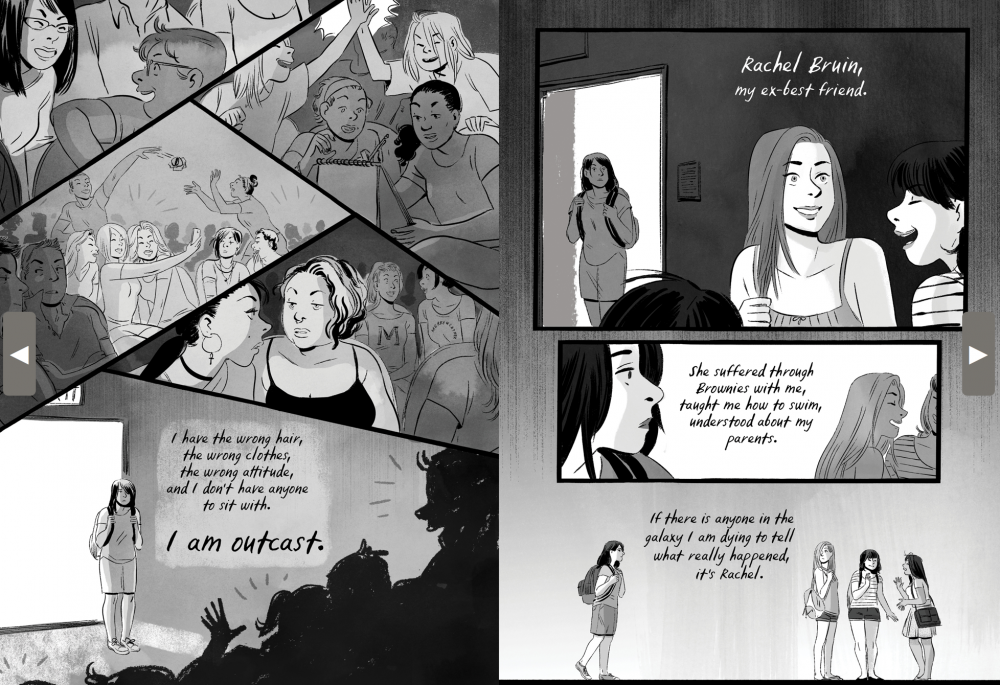
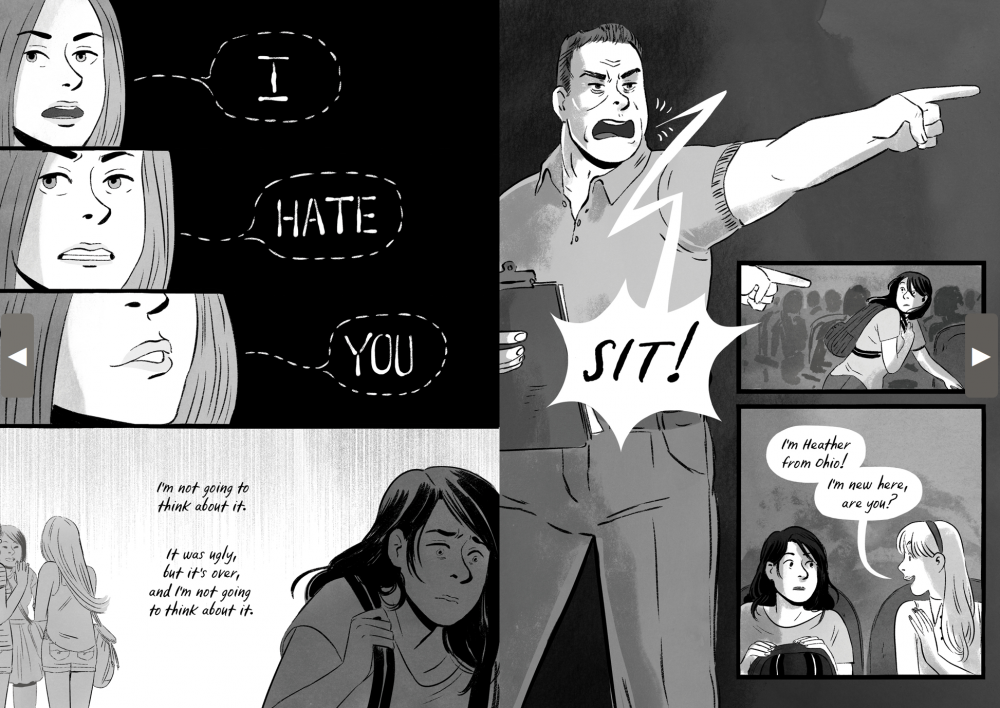
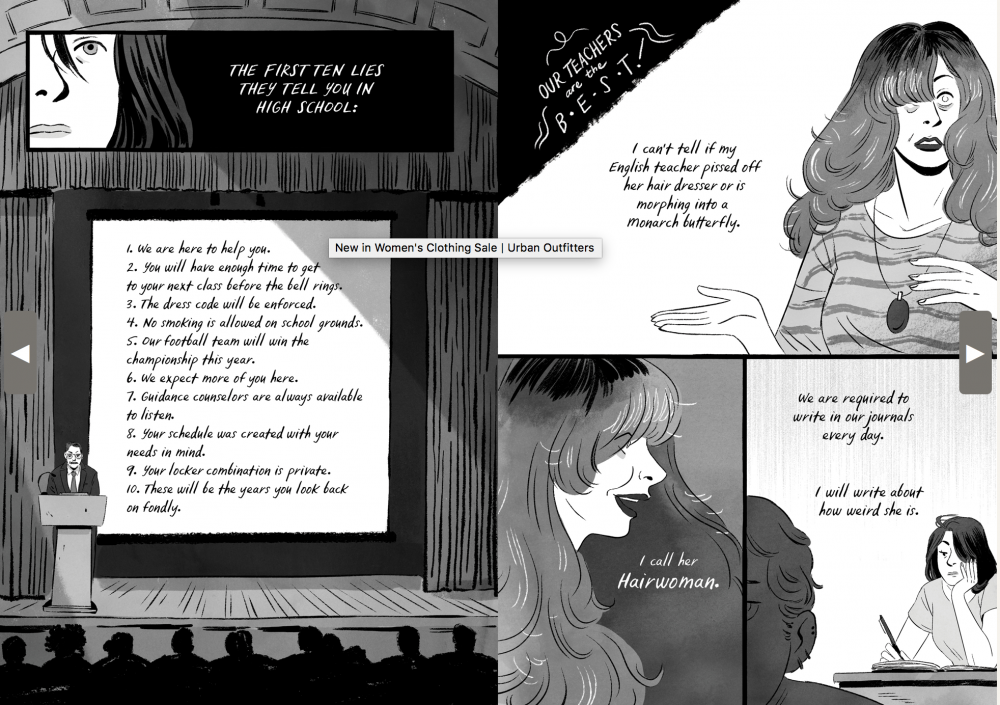
Speak: The Graphic Novel
Laurie Halse Anderson; illustrated by Emily Carroll
Farrar, Straus and Giroux (BYR)
FSG Books for Young Readers
02/06/2018
ISBN: 9780374300289
384 Pages, Ages 12-18


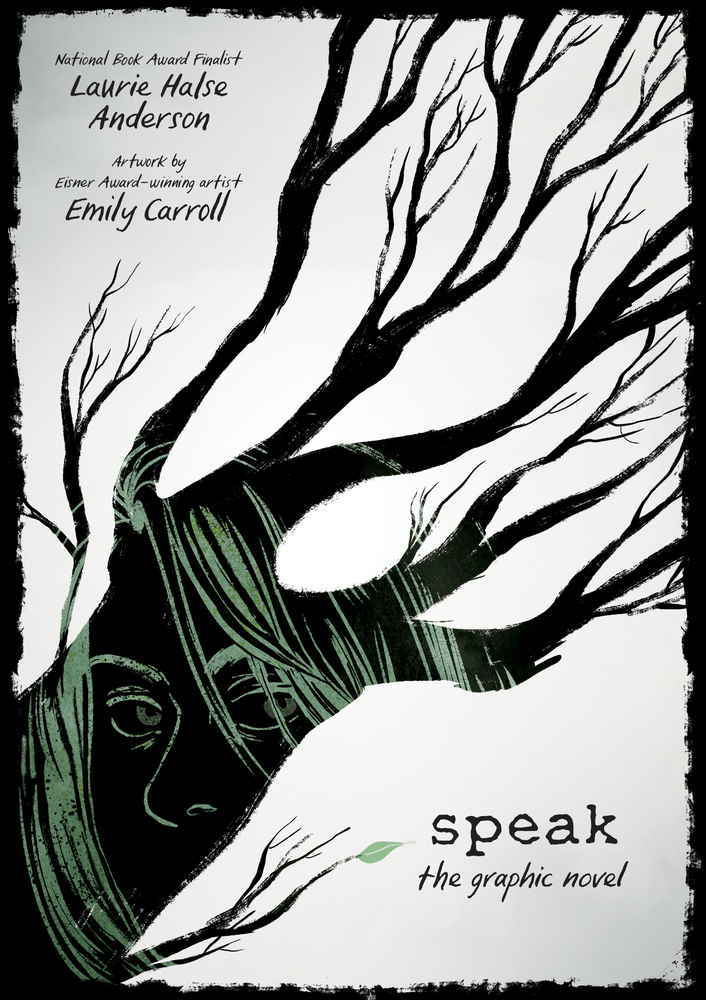






This is new and powerful messages to people. These is the best graphic novel review.
Becoming aware of good American writers is a little more difficult when your in another country, particularly good YA. So, cheers, I’ll look forward to reading the prose novel first. Nice review
This is new and powerful messages to people. These is the best graphic novel review.
Comments are closed.